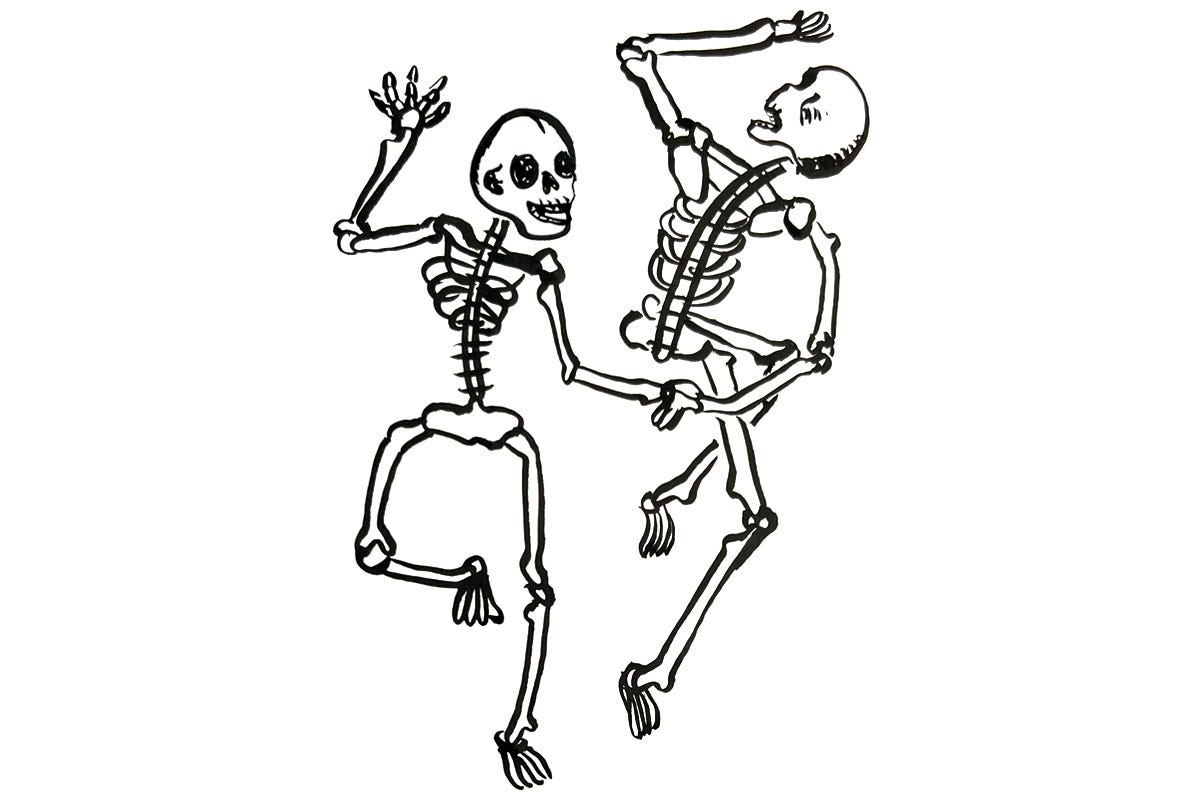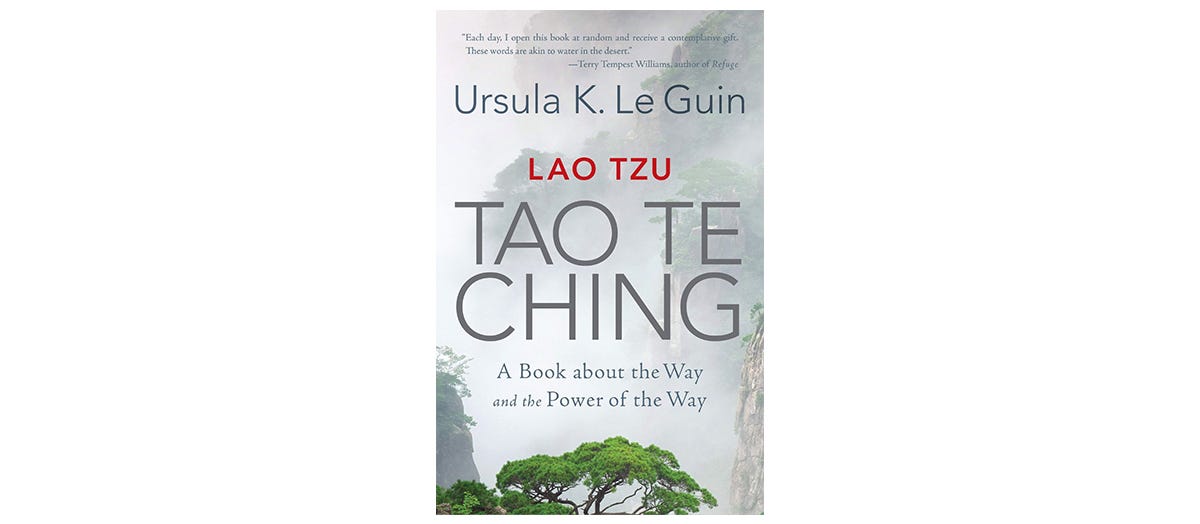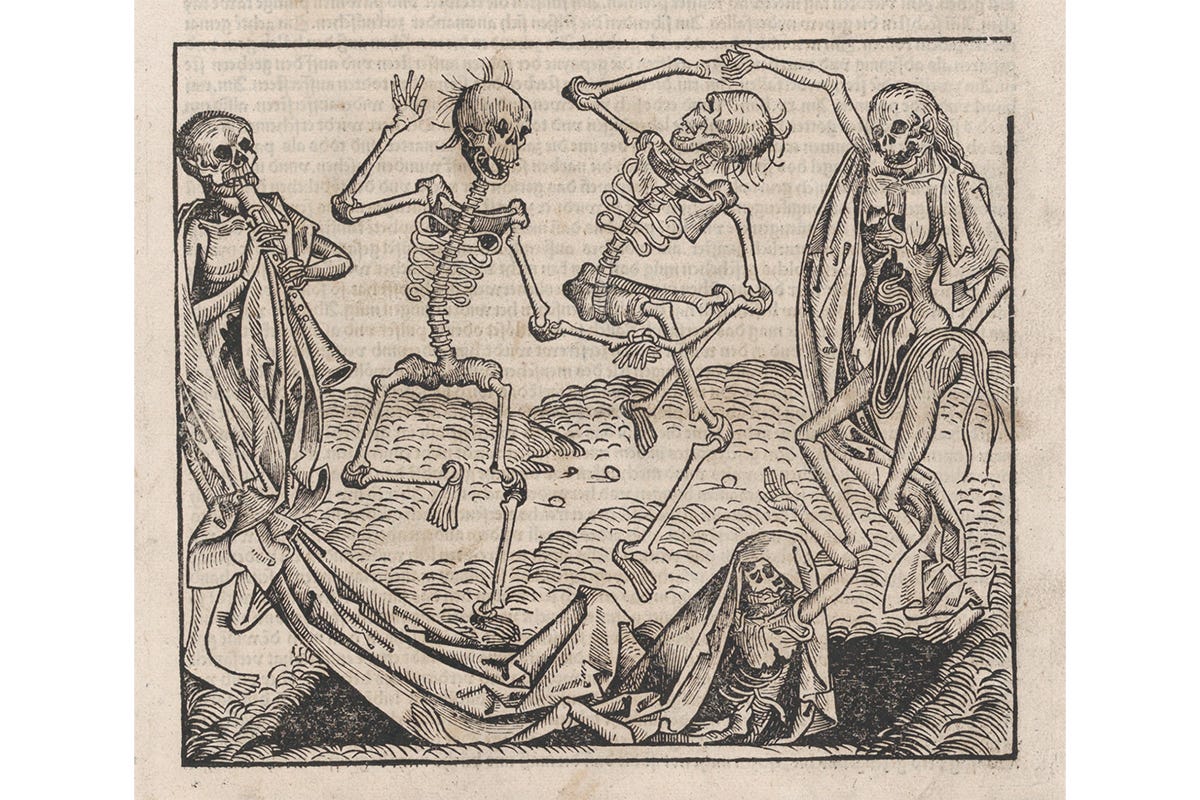This Got Real Existential, Real Quick
Inspired by Lao Tzu, Ursula K. Le Guin, and The Hitchhiker’s Guide to the Galaxy.
This is the eleventh installment in my series, The Art of Wisdom, a study of art from the world’s wisdom traditions.

I ended my last Art of Wisdom essay with the question: if we go somewhere else when we are totally immersed in the creative process… where is it that we go?
So now I’m supposed to tell you the answer, right?
Well… first, I thought I’d return to my introduction to this series from almost a year ago, the essay Exploring the Big Life Questions Through Art. In that piece, I explained the context of this series, which was partially spurred by questions of life and death and meaning after my miscarriage. Some of the questions I asked included: “Why did this happen? How do I make sense of death? What is the purpose of living and loving if there is also dying and separation?”
But now, after almost a year of opening myself up to those questions and recording my journey to answer them, my whole view of the concept of questions and answers is changing.
Lao Tzu and Ursula K. Le Guin
In 1997, the writer Ursula K. Le Guin, of science-fiction novel fame, translated the Tao Te Ching into a fresh English version of the 2,500-year-old Chinese Taoist text.
The Tao Te Ching is a series of succinct poems describing The Way and how we can follow The Way. Far from concrete instructions, its language is poetic and cryptic. It’s also filled with paradoxes—the pairing of two irreconcilable concepts—such as: “useful emptiness,” “dim brightness,” and “doing by not doing.”
Here’s another good one: “The perfect square lacks corners.”
Like, what?
But the point of these paradoxes is not to confuse us and make our heads hurt. The paradoxes are meant to make us think about these big, abstract concepts in a big, abstract way. If we try to work out the paradox with our logical brain, with our reason, trying to solve it like a puzzle… well, it just doesn’t work. There’s no real way to reconcile two irreconcilable things. And there are some questions that just don’t have answers.
But, if we can let go of our logical brain and use a different mode of thinking, if we can try to sit with the paradox, and let it just be, we can begin to accept it as the way things are. (Which, by the way… is what Tao means. Tao can be defined as The Way as in, The Way Things Are.)
Le Guin says that writing about these existential topics in an abstract, poetic, and even paradoxical way is necessary:
“[Lao Tzu is] explaining a profound and difficult truth here, one of those counterintuitive truths that, when the mind can accept them, suddenly double the size of the universe.” –Ursula K. Le Guin
We try to explain abstract things in concrete words, we try to answer fluid questions with rigid answers, and we try to name nameless things because we’re human and that’s what we do. But the first two lines of The Tao Te Ching are:
“The Tao that can be told is not the eternal Tao.
The name that can be named is not the eternal name.”
–The Tao Te Ching, translated by Ursula K. Le Guin
So we search for answers to our impossible questions and instead uncover impossible paradoxes. What the heck are we supposed to do with all these paradoxes? We search again for the answer: how do we resolve them?
Le Guin says these questions and paradoxes “must be pondered and brooded over.”
It’s obvious how Le Guin chooses to do this—she is an artist and a writer and uses the creative process. Her novels are all manifestations of her pondering and brooding of deep questions. The stories she writes don’t proclaim answers, but they reveal truths. In her novel The Left Hand of Darkness, Le Guin writes:
“To learn which questions are unanswerable, and not to answer them: this skill is most needful in times of stress and darkness.” ―Ursula K. Le Guin, The Left Hand of Darkness (1976)
Le Guin writes stories. And what could be better to ponder impossible questions and inconceivable mysteries than stories? What could be a better method of discovering and sharing wisdom with humans who think in words than stories?
All the world’s religions know this. The Mahabharata and Ramayana epics of Hinduism, the Jataka Tales of Buddhism, and the Jesus parables of Christianity all aim to communicate truth through stories. Instead of responding to our questions with concrete instructions, we are offered stories in which, as Le Guin says, “the images are charged, rich in implications.”
Instead of telling us what to think, these stories allow us to discover how to think for ourselves. Instead of laying out an explicit answer, the story implies a direction to look in. It suggests an answer in an open-ended way, forcing us to participate in the story and develop our own interpretation. We may not fully understand what the story means. But we know what it’s about.
And the amazing thing is that, as artists, we get to participate in this process at an even deeper level. We can go beyond being a reader or viewer, and step into being a creator. We can begin with a question, and “ponder and brood” as Le Guin said, and sit with it, inhabit it, accept it, and come to some deeper sense of knowing. Le Guin describes her books:
“…not as a vehicle for a message, but as an exploration, a voyage of discovery resulting in something I didn’t know before I wrote it.”
Yeah, Sure, OK… But I Still Wanna Know: Where Do We Go When We Make Art? How Do We Live With Death? Why Are We Here? And What the Heck is the Meaning of Life!?
Well, what am I really looking for with these questions? Do I really think there’s an answer to them? And if someone could give me a concise one-sentence answer, do I really think it would help?
Or do I not need to the know answer at all? Can I know without knowing? Can I accept the counterintuitive truth, the paradox, the unanswerable question? And is, perhaps, the best way to do that through the creative process—through story, poetry, and art?
And so, that’s where I’m at. For today, I’m answering my questions with a story: a story from Douglas Adams’ science-fiction novel, The Hitchhiker’s Guide to the Galaxy. In the book, super-intelligent beings in the past built a supercomputer called Deep Thought to give them the answer to the “Ultimate Question to Life, the Universe, and Everything.” After 7.5 million years, Deep Thought spits out the answer: “42”. Understandably, this answer is disappointing to the beings, because well, it makes no sense. Deep Thought responds, “I think the problem, to be quite honest with you, is that you’ve never actually known what the question is.” So the beings of course say, “Can you just please tell us the Question?” Deep Thought says no, but that he can build the computer that can:
“A computer whose merest operational parameters I am not worthy to calculate—yet I will design it for you. A computer which can calculate the Question to the Ultimate Answer, a computer of such infinite and subtle complexity that organic life itself shall form part of its operational matrix. And you yourselves shall take on new forms and go down into the computer to navigate its ten-million-year program! Yes! I shall design this computer for you. And I shall name it also unto you. And it shall be called… The Earth.”
What if we’re living out the Great Question? What if an artistic suggestion is more powerful than an explicit answer? What if the “voyage to discovery” as Le Guin says, is the point? What if the question reveals more than the answer?
Douglas Adams’ story is not an answer. Ursula Le Guin’s stories are not answers. The epics, sagas, and parables of the world’s wisdom traditions are not answers. A story—even the greatest story ever told—cannot give us an answer. But as Le Guin translates on the very first page of the Tao Te Ching,
“If you see it rightly, it contains everything.”
This Week’s Art Inspiration
My illustration at the top of this essay was inspired by the Dance of Death by Michael Wolgemut, from The Nuremberg Chronicle, 1493.
Thanks for reading!
<3,
Christine









This post has really got me thinking. I love this series you're making here, and the thoughts you're combining. I feel like it's "food for the soul" type stuff.
I'm going to have to read the book you mentioned - the translated Tao by Le Guin. Seems like just the kind of thing I need right now. Just last night I was struggling to sleep while wrestling with these questions, so I think my brain needs to do some proper pondering! It's interesting your link here to stories, as my idea for my current story project was to use it as a sort of "therapy" for myself, to explore ideas. Like probably all stories are.
Another brilliant read.
If we are part of the computer coming up with the question (to which 42 is the answer) then I can already see the frame of it!!??? It seems that everyone these days know the answers - this is the Truth - I’m right, you’re wrong! - THIS is the line in the Bible that we must abide by - etc etc. But the interpretations are all based on what we NEED to believe, because if it’s all wrong, then everything we’ve built our lives upon is wrong and that is way too scary to consider!!
Tao, the Way, seems to necessarily be built upon uncertainty. Art allows us to put down the truths we see and then to listen to the opinions and emotions that it evokes...?? Listening is so hard but so necessary.
Thanks so much Christine. You’ve really made me think! So cool.
Take care beautiful soul. And thanks so much for the part that you play in my life. 🤗🤗🤗😘🌼🌼🌻